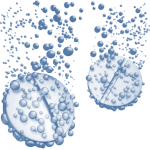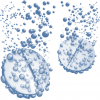A contribution to the valorization of two medicinal plants: Atriplex halimus sub. Sp. Schweinfurthii and Bunium incrassatum, growing in the region of M’sila (north-east Algeria)
Dehimi Khadidja, Djoudi Zouina, Boulaouad Anis, Maadadi Abd Raouf, Dahamna Saliha, Khennouf Seddik
Abstract:
Atriplex halimus and Bunium incrassatum were extracted using solvents from different polarities (water, methanol, acetone and hexane). To evaluate the antioxidant abilities of the extracts, three in vitro test systems were employed: DPPH scavenging assay, β- carotene bleaching test and the reducing power assay. Extractions using acetone were the richest in polyphenols, while hexane fractions from both plants were found to contain the highest amounts of flavonoids. Tannins were more frequent in acetone fraction from AH. The best scavenging activity against DPPH radical was obtained by hexane extract from AH, followed by acetone and methanol extracts from the same plant. BI fractions showed a weak scavenging activity with IC50 values higher than 20 mg.mL-1. Acetone fractions showed the best iron reducing activity in both plants. In the BCB assay, hexane fraction from AH showed an excellent activity which was very close to that of butylated hydroxytoluene.
Keywords: Atriplex Halimus, Bunium Incrassatum, Polyphenols, DPPH, Reducing Power, β- Carotene Bleaching.



